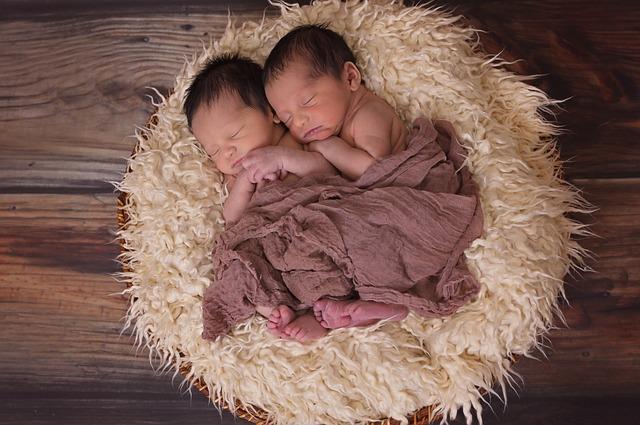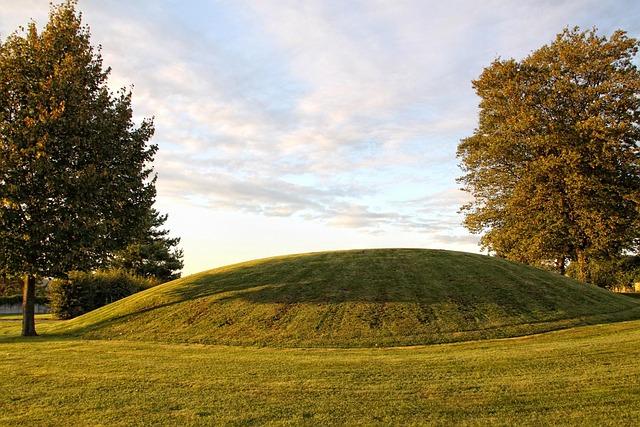Discovery of Twin Infants in Historical Tragurium Unveils Insights into Roman Burial practices
Current archaeological excavations in the historic website of Tragurium, Croatia, have led to a outstanding discovery that sheds gentle on the burial customs of the Roman period. The stays of dual infants, relationship again to the 2nd century AD, have been discovered meticulously interred in a single grave inside a Roman villa. This distinctive discover not solely highlights the importance of twins in historic Roman society but in addition raises questions concerning the rituals practiced throughout such burials.
Researchers famous a number of distinct points of the burial that mirror Roman attitudes towards household and mortality. The grave contained objects believed to be related to protecting rites, suggesting a deep-seated perception in safeguarding the afterlife of the deceased. Among the many findings have been:
Funerary artifacts: Small ceramic collectible figurines believed to ward off evil.Private objects: Beads and trinkets, hinting at a familial connection.Layered burial method: Indicating a ritualistic strategy to interment.FindingsInterpretationTwins buried togetherSymbolizes unity and shared destinyPresence of protecting artifactsBelief in safeguarding the soulsOrnamental itemsIndicates social standing or familial connections

The Significance of the Grave Context: Understanding Roman Societal Norms within the 2nd Century AD
The invention of dual infants buried collectively in a grave inside a Roman villa in Historical Tragurium presents a poignant glimpse into the intricate societal norms of 2nd century AD Rome. Little one mortality was a big actuality on this period, and the burying of infants, particularly in such a paired context, displays profound familial and cultural practices surrounding life and loss of life. This burial practise not solely signifies the familial bond amongst twins but in addition hints at societal attitudes in the direction of youngsters who didn’t survive. Elements that contributed to such burial practices embrace:
Beliefs within the afterlife: The Romans usually held beliefs that influenced how people have been laid to relaxation.familial significance: The joint burial signifies the significance of twins in familial traces,embodying each connection and loss.Social norms: This burial could point out a societal inclination to have a good time the lifetime of the departed, nonetheless temporary, as half of a bigger social customized.
The archaeological context surrounding these twin burials additionally sheds gentle on the social stratification of Roman society at the time. The posh of a villa burial means that the household of the deceased could have been of some social standing, indicating how standing influenced burial rites and practices.Moreover, the next parts are essential in understanding the significance of such findings in Roman society:
ElementSignificanceLocationIndicates wealth and entry to resourcesGrave GoodsReflects social standing and beliefs concerning the afterlifeBurial PracticesHighlights societal attitudes towards mortality
By understanding these parts, we are able to respect not solely the cultural cloth of Roman society but in addition how such practices reveal compassion amidst the cruel realities of life throughout that point. The grave context of the dual infants serves as a microcosm, illustrating the complicated relationship Romans had with their deceased, particularly these who occupied a fleeting, but important position inside the household construction.

Archaeological Findings within the Roman Villa: What the Proof Tells Us About Toddler Mortality
The invention of the dual infants buried collectively within the historic Roman villa at Tragurium reveals essential insights into the patterns of toddler mortality in the course of the 2nd century AD. Archaeologists discovered the stays in a solitary grave, meticulously positioned facet by facet, which prompts a number of essential questions relating to the well being and residing situations of infants throughout this era. Toddler mortality charges have been notably excessive in historic Rome,steadily sufficient reaching upwards of 30% to 50%,highlighting the cruel realities of life earlier than trendy drugs. This website offers compelling proof that may assist delineate the components contributing to such charges, together with environmental influences, dietary deficiencies, and the prevalence of illness.
Moreover, the burial practices noticed on the villa make clear the cultural attitudes in the direction of life and loss of life in Roman society, notably regarding youngsters. The cautious association of the dual graves suggests a important emotional funding from the caretakers, pointing in the direction of a societal recognition of the sorrow related to dropping infants. Key findings from this excavation embrace:
Place of Our bodies: Signifies attainable reverence or spiritual beliefs surrounding burial rites.Age at Loss of life: Evaluation of skeletal stays suggests the twins have been doubtless beneath one 12 months previous.Related Artifacts: Objects discovered throughout the grave could reveal insights into the familyS social standing and beliefs.
These findings will contribute to a bigger context relating to the healthcare frameworks of the time, the position of households inside Roman society, and the that means of such early loss. Understanding these parts not solely enriches our historic data however additionally presents a poignant reminder of the fragility of life in a time gone.

cultural Implications of Twin Burials: Exploring Familial Buildings in Historical Rome
The invention of twin infants interred collectively in a single grave at a Roman villa offers a profound lens by which to look at the familial constructions and cultural views of historic Roman society. in antiquity, the burial of twins could have held important symbolic that means, reflecting the *Roman emphasis on lineage, unity, and the continuation of household heritage*. The selection to inter each siblings in a single grave suggests not solely a powerful bond between them but in addition a mirrored image of the potential beliefs relating to the afterlife and the connection between twins. Such practices may point out that twins have been seen as a singular entity, deserving of equal reverence in loss of life, which in flip highlights the *complicated layers of familial identification* in a society that was in any other case closely influenced by particular person achievement and social standing.
Moreover, the burial practices surrounding twins might illuminate *broader cultural norms and values* associated to little one mortality, household dynamics, and social expectations. The next factors encapsulate the attainable implications of those twin burials:
Social Standing: The funerary practices of the prosperous could have differed from these of commoners, hinting at how societal class influenced familial burial rites.Spiritual Beliefs: the religious significance of twins in historic mythology could have contributed to the choice to bury them collectively, echoing practices present in othre historic cultures.Gender Roles: Issues relating to the sexes of the infants might additionally impression interpretations of the grave construction and accompanying grave items.
To additional elucidate these notions, analyzing comparative knowledge from different archaeological findings can provide perception into how widespread this apply was and its implications on our understanding of household hierarchy in Roman society. the next desk summarizes key findings from choose archaeological websites:
SiteYear of BurialNumber of Twins FoundGrave StructureTragurium2nd Century AD2Single gravePompeii1st century AD3Individual gravesOstia3rd Century AD4Shared tomb

Preservation Efforts: Suggestions for Defending Weak Archaeological Websites in Croatia
Because the outstanding discovery of the dual infants’ burial website sheds gentle on the Roman presence in historic Tragurium,defending related archaeological treasures turns into crucial.Collaborative efforts are essential for safeguarding these susceptible websites. Authorities businesses, archaeological societies, and native communities ought to work collectively to set up a whole preservation plan that features the next suggestions:
Implement Protecting Laws: Implement strict laws that forestall unauthorized excavations and constructions in delicate areas.Create Conservation Areas: Designate zones round important archaeological websites to limit growth and promote tourism responsibly.Conduct Common Assessments: Perform periodic evaluations of archaeological websites to watch their situation and determine potential threats.Improve Public Consciousness: Educate the group concerning the significance of archaeology and encourage volunteer efforts for website upkeep.
Furthermore, leveraging superior applied sciences can considerably bolster conservation initiatives.Efforts reminiscent of distant sensing and 3D modeling can assist in documenting websites digitally, making certain their preservation even when bodily deterioration happens. An efficient technique may embrace establishing a database to trace archaeological websites throughout Croatia. This might be facilitated by focused funding and collaboration with worldwide preservation organizations. Some recommended funding allocations may very well be:
Funding SourcePurposeEstimated AmountLocal governmentSite Upkeep$50,000Archaeological SocietiesPublic Consciousness Campaigns$20,000International GrantsTechnological Improvements$75,000

Future Analysis Instructions: Investigating the Life and Loss of life of Infants in Historical Civilizations
Because the current discovery of dual infants buried in the identical grave at an historic Roman villa in Tragurium sheds gentle on the practices surrounding toddler mortality and burial customs,it opens up pathways for deeper exploration into the societal attitudes of historic civilizations. Future analysis ought to give attention to a multifaceted strategy that features:
Anthropological research: Understanding the cultural significance attributed to twins, how they have been perceived in society, and their roles inside familial constructions.Archaeological methodologies: Using superior imaging strategies and DNA evaluation to glean details about well being,genetics,and the residing situations which will have contributed to excessive toddler mortality charges.Historic context: Investigating historic texts that reference little one rearing, mortality, and burial rites to create a complete view of toddler life in historic Rome.
Moreover, interdisciplinary collaborations can enrich the analysis agenda. Partaking fields reminiscent of bioarchaeology, sociology, and comparative mythology could yield novel insights. A give attention to the next points may very well be significantly useful:
Cross-cultural comparisons: finding out burial practices throughout totally different historic civilizations to draw parallels and contrasts in toddler mortality and societal responses.Mortuary rituals: Inspecting the rituals related to the burial of infants and twins, highlighting potential beliefs within the afterlife or ancestral connections.Well being and vitamin: Analyzing the dietary and environmental components that impacted well being throughout infancy by the examine of skeletal stays.Analysis focusPotential FindingsAnthropological studiesCultural significance of twinsAdvanced imaging techniquesInsights on well being and geneticsHistorical textual content analysisUnderstanding burial rites

Closing Remarks
the outstanding discovery of dual infants buried collectively in a shared grave at a Roman villa in Tragurium, Croatia, offers a profound glimpse into the lives and customs of historic societies. This poignant discover not solely underscores the important position of household and group in Roman tradition but in addition serves as a reminder of the frailty of life within the 2nd century AD. Archaeological insights like these are essential for understanding the social dynamics of the previous, demonstrating how the bonds of kinship transcended even essentially the most difficult circumstances. As researchers proceed to research this extraordinary burial website, we’re reminded of the enduring legacy of these who lived way back and the continued exploration of our shared human historical past. For additional updates on this discovery and different archaeological findings, keep tuned to LBV Journal.
Source link : https://europ.info/2025/03/06/croatia-2/twin-babies-from-the-2nd-century-ad-buried-together-in-the-same-grave-of-a-roman-villa-found-in-ancient-tragurium-croatia-lbv-magazine/
Writer : Victoria Jones
Publish date : 2025-03-06 18:46:00
Copyright for syndicated content material belongs to the linked Source.


